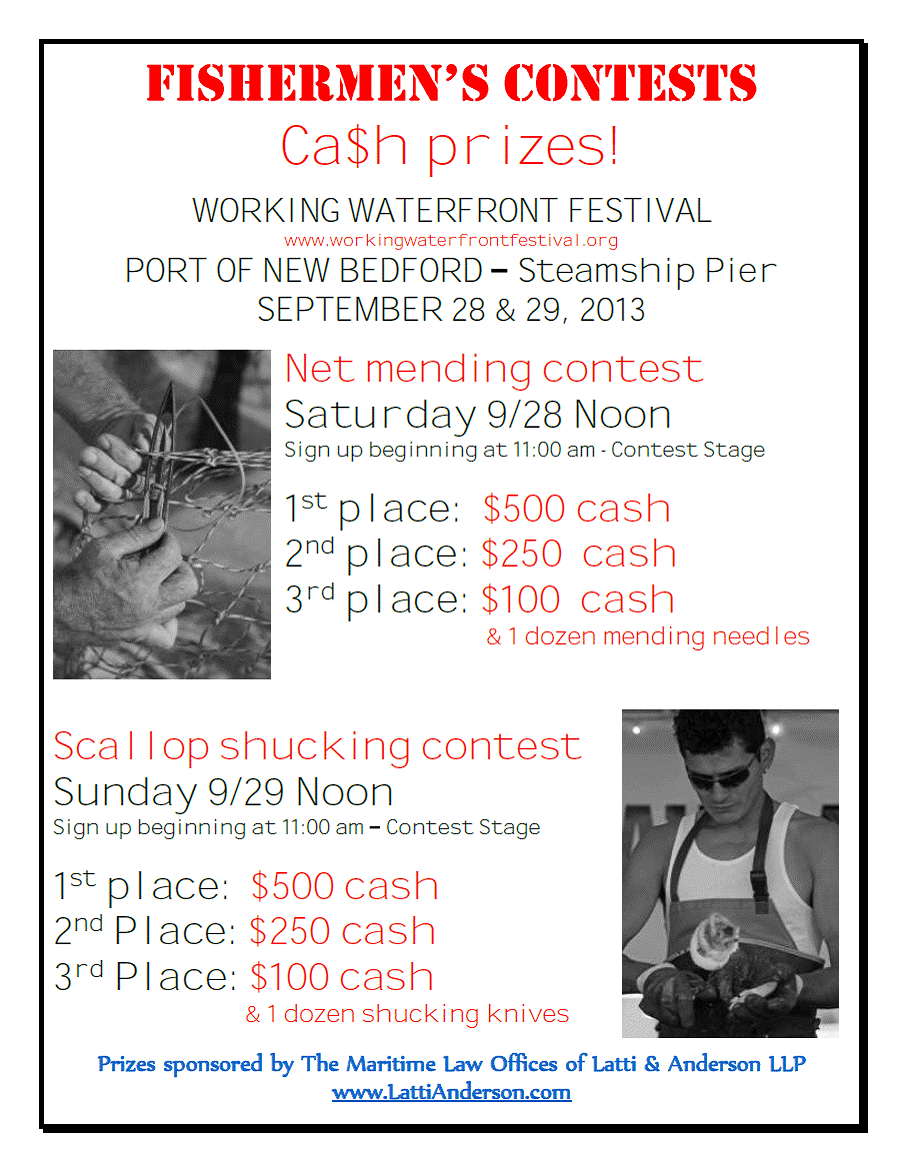The following is excerpted from a story that appears in the October issue of National Fisherman:
Omega Shipyard at Moss Point, Miss., recently delivered two menhaden steamers to the Omega Protein plant in Reedville, Va. They will be fishing in Chesapeake Bay and off the Virginia coast.
Both steamers are converted offshore oil supply boats that operated in the Gulf of Mexico, carrying equipment and personnel to and from oil platforms.
The 196' x 40' Rappahannock was built in 1982, making it the largest boat operated by Omega Protein. The 184' x 38' Fleeton was built in 1976. The addition of the two boats gives Omega's Reedville menhaden fleet a total of seven
steamers.
These are not "steamers" in the sense of being powered by coal-fired steam engines, as menhaden boats once were-starting in the 1870s when steam replaced the sail power of schooners, sloops and pungies. Today the boats are diesel powered, but around Chesapeake Bay they are still referred to as steamers.
"The offshore supply boats make good fish boats," says Omega Protein's general manager, Monty Deihl. "The boats are wide and long, stable and low-sided. We have to be able to work from the deck, so we must have a relatively low-sided vessel." He adds that converting a supply boat as opposed to building a new steamer is "a very cost-effective option."
Of course, taking boats designed for work not at all related to commercial fishing and giving them the capability to catch menhaden requires some alterations. In an 18-month project, the Omega yard rebuilt about 40 percent of each steamer. Most of the work took place in the stern and the midship section.
"We gutted out the whole boat," says O.W. Brown, the shipyard's general manager. Below deck, a supply boat has a centerline corridor that goes between tanks for fuel, seawater and mud. They removed the corridor and all the tanks. Beyond that, Brown says, "We used framing that was there, and tossed out what was bad and replaced it."
In the now empty space, they built four insulated fish holds. "The fish holds are slightly larger than on our standard boats. We also doubled the tonnage of the refrigeration system to improve the quality of our product when it gets to our processing plants," says Brown.
Read the full story from National Fisherman


 “Each year has been different, not just in the length of the cruise and the weather conditions but also in what we’ve been able to accomplish," Haas said. “No other groups are tagging turtles offshore in the Mid-Atlantic region, making the project unique and also a positive example of NOAA, industry and non-governmental organization (NGO) collaboration. All partners, including the captains and crews of the commercial fishing vessels, have brought key pieces of the puzzle to the table, and this teamwork makes it work.”
“Each year has been different, not just in the length of the cruise and the weather conditions but also in what we’ve been able to accomplish," Haas said. “No other groups are tagging turtles offshore in the Mid-Atlantic region, making the project unique and also a positive example of NOAA, industry and non-governmental organization (NGO) collaboration. All partners, including the captains and crews of the commercial fishing vessels, have brought key pieces of the puzzle to the table, and this teamwork makes it work.” 